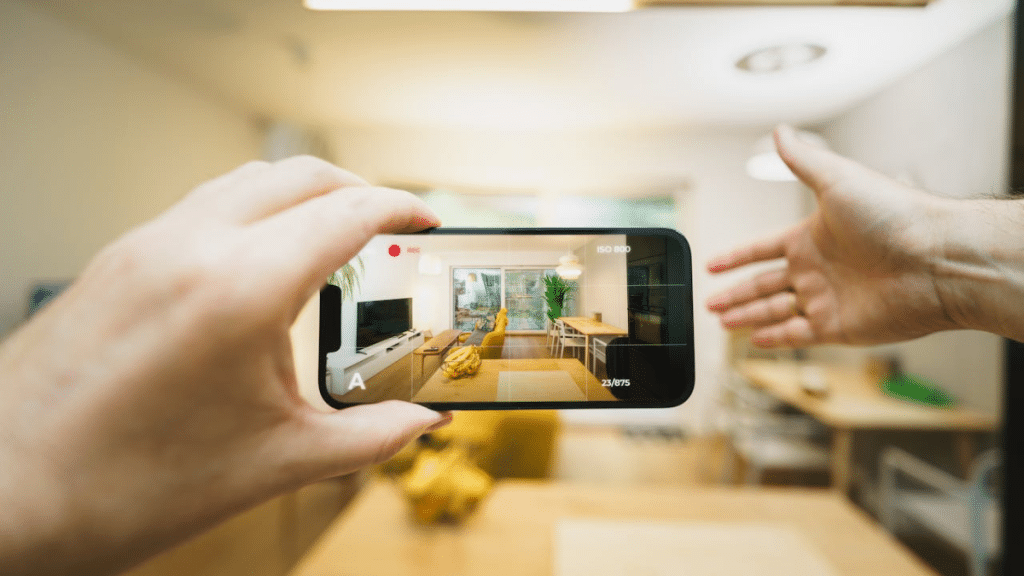Virtual reality (VR) has revolutionized real estate marketing, providing immersive property tours that help potential buyers and renters explore spaces remotely. As this technology evolves, enhancing the depth of immersion is crucial for creating realistic, engaging, and informative experiences.
By integrating cutting-edge tools, compelling storytelling, and interactive features, real estate professionals can maximize the impact of VR in property showcasing. This blog will discuss eight strategies to enhance virtual reality immersion in real estate.
1. Leverage High-Quality 360 Cameras for Detailed Visuals
A key factor in creating an immersive VR real estate experience is high-resolution, accurate visuals. Advanced 360 cameras, like Giraffe360, capture panoramic views with exceptional detail, allowing users to explore properties from multiple angles seamlessly.
Some of the benefits of using 360 cameras include:
- Improved Client Engagement: High-definition imagery enhances realism, helping clients feel as though they are physically present in the space.
- Seamless Virtual Tours: 360-degree cameras provide smooth, distortion-free imaging for interactive walkthroughs.
- Enhanced Decision-Making: Buyers can examine intricate details, such as flooring textures and room layouts, before scheduling in-person visits.
By incorporating a 360 camera into the VR process, real estate professionals can present properties in a more compelling and accurate manner.
2. Utilize Interactive Floor Plans
An interactive floor plan bridges the gap between static property listings and fully immersive VR tours. These features allow users to navigate a digital map of the home, selecting specific areas to explore. Interactive floor plans enhance spatial understanding, ensuring that clients can visualize how different rooms connect and flow together.
3. Integrate Augmented Reality (AR) Elements
Augmented reality (AR) can enhance VR real estate experiences by adding interactive, informative layers to virtual tours. AR elements can include:
- Pop-up descriptions of features, such as smart home technology or premium materials
- Virtual staging options allow users to customize furniture and decor
- Measurement tools to help buyers determine if their existing furniture will fit into a space
By blending AR with VR, real estate professionals can create a more engaging and informative user experience.
4. Employ Cinematic Storytelling Techniques
A well-structured narrative can make virtual property tours more captivating and memorable. Some tactics you can employ include:
- Use a voiceover or guided narration to highlight key features
- Present the property in a way that aligns with lifestyle aspirations
- Showcase the home’s unique selling points, such as a breathtaking view or a custom-built kitchen
5. Enable Multi-User Virtual Tours
VR real estate experiences should not be limited to solo exploration. Multi-user virtual tours allow real estate agents and potential buyers to explore a property together in real-time, regardless of physical location. This strategy fosters collaboration and can expedite decision-making processes.
6. Improve Lighting and Spatial Awareness with HDR Imaging
Lighting plays a crucial role in making virtual real estate tours feel authentic. High Dynamic Range (HDR) imaging enhances depth and contrast, ensuring that properties appear vibrant and true to life. Some features of HDR include:
- Maintains realistic shadows and highlights
- Enhances window views, reducing overexposure
- Creates a sense of warmth and natural ambiance
Accurate lighting representation improves spatial perception, helping potential buyers experience the atmosphere of a property more effectively.
7. Implement VR Headset Compatibility
While many virtual tours are accessible via desktop or mobile devices, using a VR headset takes immersion to the next level. Real estate professionals should optimize their virtual experiences for compatibility with popular headsets like Oculus Quest, HTC Vive, and PlayStation VR.
Encouraging clients to experience properties through VR headsets can lead to stronger emotional connections and faster decision-making.
8. Incorporate Real-Time Data and Customization
To personalize virtual real estate experiences, integrating real-time data and customization options can be highly effective. These features may include:
- Live market updates
- Customizable viewing options
- Interactive neighborhood guides
By offering tailored insights, real estate professionals can address potential buyers’ specific needs and concerns within the VR experience.
Conclusion
Virtual reality has transformed the real estate industry, making property tours more accessible, engaging, and interactive. By incorporating tools such as 360 cameras, interactive floor plans, AR elements, and cinematic storytelling, professionals can create truly immersive experiences.
As technology continues to advance, these innovative strategies will shape the future of real estate marketing, offering unparalleled convenience and depth in property exploration.
